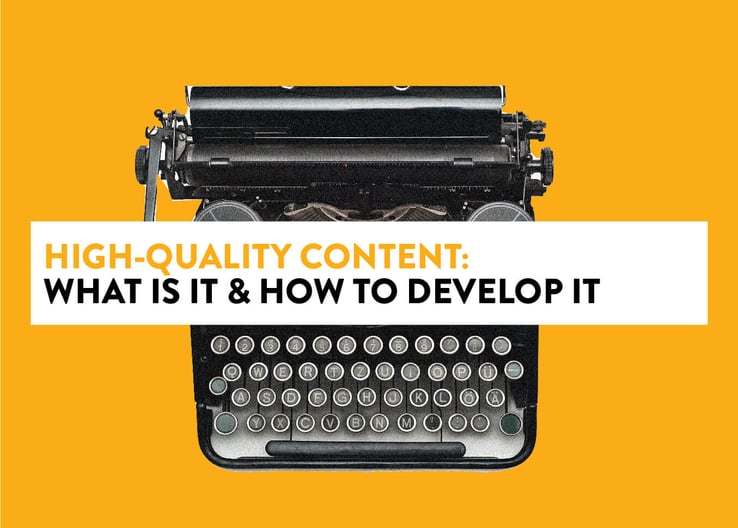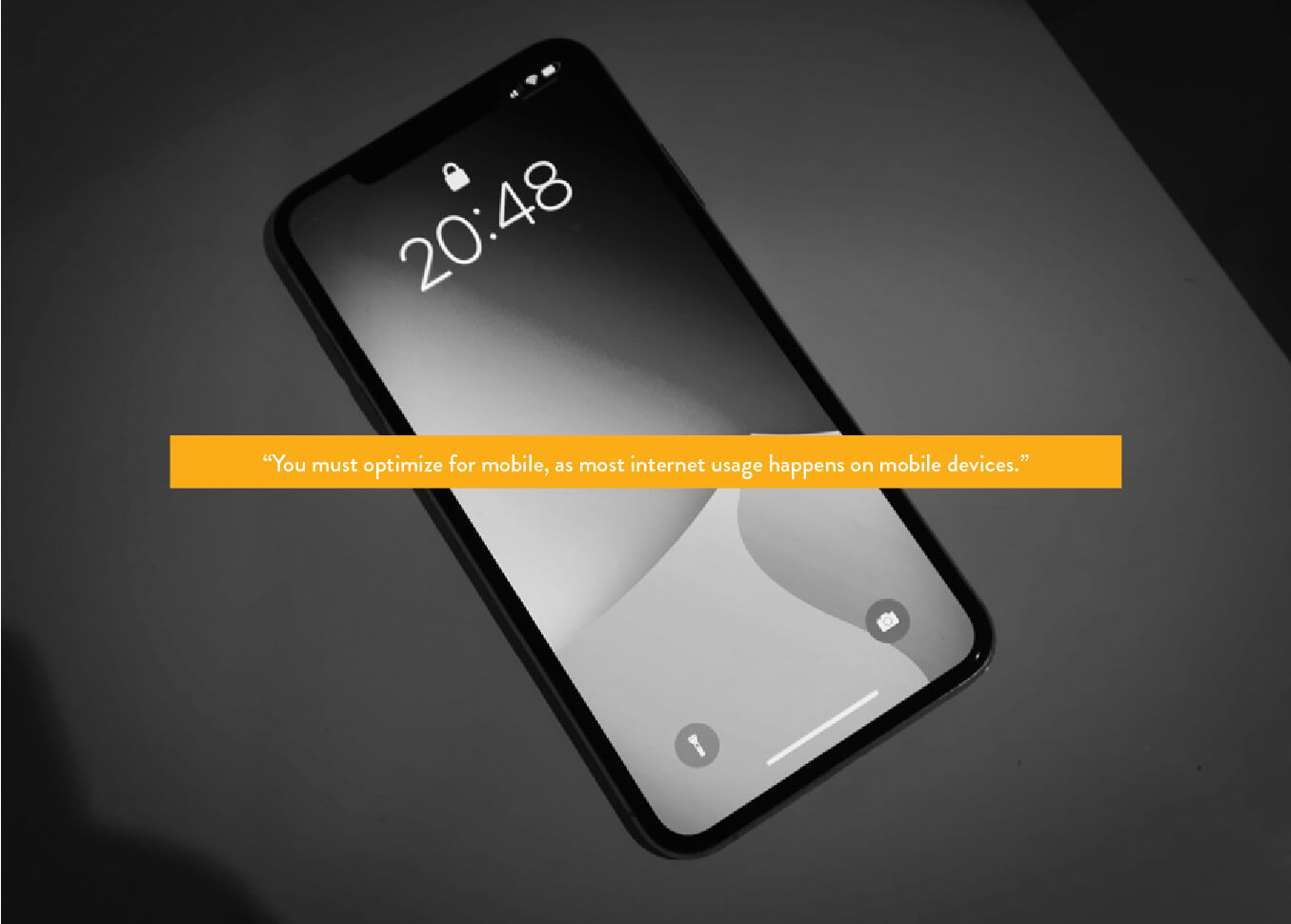
A successful SEO strategy requires high-quality content to drive search rankings.
Creating high-quality content means going above and beyond a typical blog post to include thoughtful and valuable content based on research, data, and well-crafted copy.
SEO content writing aims to enhance a website's visibility and, by extension, its profitability — which overlaps directly with content marketing services. High-quality content contains compelling narratives that draw readers in, keep them on your website longer, and provoke actions that further your business objectives. Quality content is how you provide value to your audience, solve their problems, and establish your brand as a thought leader in your industry.
Creating high-quality content isn't an art reserved for the creatively gifted. It's a discipline that can be developed and honed. A balance between delivering value to your audience and optimizing for search engine visibility is the golden rule of content creation, and achieving objective quality is a surefire way to elevate your digital marketing game.
The Importance of High-Quality Content in SEO

“High-quality content" is a buzzword you've likely heard repeatedly. It's pivotal in attracting and retaining your audience's attention. It offers your readers beneficial information, solutions, and insights while encouraging them to interact with you.
High-quality content is a linchpin in building links the right way. When your content offers substantial value, other websites are more likely to link to it as a reputable source of information. Inbound links, or backlinks, are a strong signal to search engines that your content is reliable and invaluable.
Conversely, putting out poor quality, thin, or duplicate content can harm your SEO efforts:
- "Thin content" is content that offers little to no value, often marked by a lack of depth or insights. This type of content doesn’t positively affect SEO, as search engines and readers see these pieces as low-value.
- Duplicating content from your website or someone else's can incur penalties from Google and damage your rankings. This could occur unintentionally due to technical issues but can also result from content scraping or copying other sites without adding any original value.
In contrast, high-quality content is unique, comprehensive and focuses on creating and promoting a positive user experience rather than attempting to game the system.
Characteristics of High-quality Content

While there isn't a universal formula to create the best high-quality content, the general characteristics remain consistent. Here are some of the key elements to focus on:
- Relevance: High-quality content always aligns with the interests and needs of its target audience. Understand your audience well and create content that applies to them — content that answers their questions, solves problems, or otherwise meets their needs.
- Useful: The hallmark of quality content is its substantial value. It should provide helpful, actionable information your audience can apply in their lives. It solves a clear and obvious problem fully.
- Thorough: Article length can vary, but quality content answers a question or solves a problem fully. There should be no questions left at the end of a quality piece of content.
- Sparks Discussion: Content that invites dialogue and engages the reader tends to stand out. Sparking discussions creates an opportunity for your content to be shared, thereby increasing its visibility.
- Genuine: Authenticity can't be underestimated. Good content is transparent, honest, and real. It doesn't just sell or promote a product or service but instead provides actual value and insight, helping establish trust between you and your community.
The ultimate goal of quality content is to provide value to your audience, so keep them at the forefront of your content creation process.
Types of Content

There are various types of content you can get creative with. Here are a few examples:
- Keyword-Focused Content: This content is built around specific keywords your target audience uses in search. The goal is to rank higher in search engine results for these keywords.
- Linkable Content: This content attracts inbound links from other websites. Typically, the more high-quality links you have pointing to your content, the higher you'll rank in search engine results. This content could take many forms, such as infographics, comprehensive guides, original research or studies, or anything else that provides significant value and is likely to be cited or referenced by other websites.
- Guides: A guide is a longer piece of content explaining how to do something in detail. Guides can often be broken up into multiple web pages, each addressing a different aspect of the guide's topic, which creates additional opportunities for targeting keywords.
- Videos: While text-based content is important, the value of engaging video content can't be understated. Videos are a great way to explain complex concepts or processes, showcase products or services, or tell your brand's story in a captivating and fascinating way. Plus, video content can be an excellent source of backlinks.
- Visual Content: Visual content is incredibly shareable and has the potential to go viral, both of which can generate a lot of inbound links. Infographics combine information and graphics to explain a concept clearly and concisely, making them particularly popular.
Regardless of the type of content, high-quality content provides solutions to problems your audience struggles with.
Best Practices for Creating High-quality SEO Content

There is no single formula for creating high-quality content. However, there are some general tips, tricks, and best practices to include.
Here are some of our best tips:
- Start with your audience. Understanding your audience is the only way you'll be able to appeal to them. Use tools like audience demographics, persona development, and user feedback to inform your content strategy.
- Conduct thorough keyword research. In-depth keyword research will help you identify the words and phrases your audience uses to search for your products, services, or information.
- Identify the value the content provides before starting. Ask yourself what value your content provides the reader. Does it answer a question, solve a problem, provide useful information, or entertain?
- Keep your content specific. Narrowing your content to a specific niche topic can help boost your ranking in search engine results. A well-researched article on a specific subject will attract more attention than a broad overview.
- Avoid jargon and ambiguity. Write in a natural manner that appeals to people and avoids sounding robotic or sales-y. Use formatting techniques like headings, lists, images, and videos wherever possible to make your content visually appealing and easier to read.
- Be unique. Make your content your own. You want content that represents your perspective and that sheds a new light or angle. Plus, search engines may penalize duplicate content.
- Optimize for readers AND search. Incorporate SEO best practices, such as using meta tags, optimizing images, including internal and external links, and ensuring your content is mobile-friendly.
- Edit, edit, edit. It's one thing to write but another to edit! Ensure your content is free of grammatical errors and typos.
- Make the next step obvious. Guide your audience to the next steps — encouraging comments or shares, directing readers to related content, or leading them to a product or service.
- Update old content. The web is dynamic, and what's relevant today might not be tomorrow. Regularly review and update your content.
These are fundamental aspects of the process, and each industry, brand, or company will need to tailor their approach to best suit their audience.
Further Tips for Creating High-quality SEO Content

While we've briefed you on the best practices, here are a few more tips that can help you create high-quality content:
- Use mixed media. Use images, infographics, videos, or other multimedia elements to enhance the readability of your content and provide various ways to present information.
- Interlink your content. Link to other relevant content on your website. This not only helps in distributing page authority and ranking power throughout your site, but it also keeps users engaged with your content longer.
- Post consistently. Regularly post fresh content to keep your audience engaged and encourage search engines to crawl your website more often.
- Write snappy meta descriptions. Write effective meta descriptions for your pages. People often see these short snippets before reading the article, so make them count.
- Monitor rankings and results. Regularly review your SEO data and analytics to understand what's working and what's not. This can inform your future content strategy.
- Watch emerging trends. With the growing popularity of voice-activated technologies, optimize your content for voice search by considering more conversational keywords and questions.
- Create evergreen content. While timely articles have their place, aim to create content that will remain relevant and continue attracting traffic long after publication.
Ultimately, you want to continue to learn, adapt, and refine your approach.
Common Mistakes in Developing High-Quality Content

SEO is a game of trial and error but there are a few mistakes to avoid:
- Write for your audience. It's easy to get caught up in keyword research and optimization and forget the end user.
- Keyword stuffing, or overusing keywords, can lead to penalties from search engines.
- Neglecting meta descriptions and title tags means search engines will have a harder time determining what your content is about.
- You must optimize for mobile, as most internet usage happens on mobile devices.
- Failing to internally link to other content on your site can be a missed opportunity to pass link equity to important pages through earned backlinks.
How To Review and Revise High-Quality Content

Reviewing and revising your SEO content is crucial in maintaining its quality and relevance over time. Here are a few key steps to consider for content editing:
- Depending on the nature of your content, you may need to review it monthly, quarterly, or at least annually. Use these reviews to identify any information that's outdated or no longer accurate and update it accordingly.
- Use analytics tools to track how your content is performing. If certain pieces attract less traffic or engagement, consider revising them to improve performance.
- Review page titles, meta descriptions, and headings and ensure they align with your strategy.
- Prioritize content that is no longer relevant or providing value for revision or removal.
Tools and Resources for Creating High-quality SEO Content

Finally, here are some tools that can help you along the way:
- Google Analytics: For determining user insights, which pages are performing well, and where there's room for improvement.
- Yoast SEO: This WordPress plugin helps you optimize your content for search engines. It provides feedback on keyword usage, readability, and other SEO factors.
- Grammarly: This tool helps you catch and correct grammar and spelling errors, enhancing the quality of your writing.
- Buzzsumo: Buzzsumo can help you identify trending topics in your industry.
- Ahrefs: A powerful SEO tool that can help you with keyword research, backlink analysis, and competitive analysis.
- Canva: This design tool can help you create attractive visuals to enhance your content.
- Hemingway App: This tool helps you improve the readability of your content by highlighting complex sentences and suggesting simpler alternatives.
Leverage the right tools and adhere to best practices to create content that ranks well and builds a meaningful connection.

